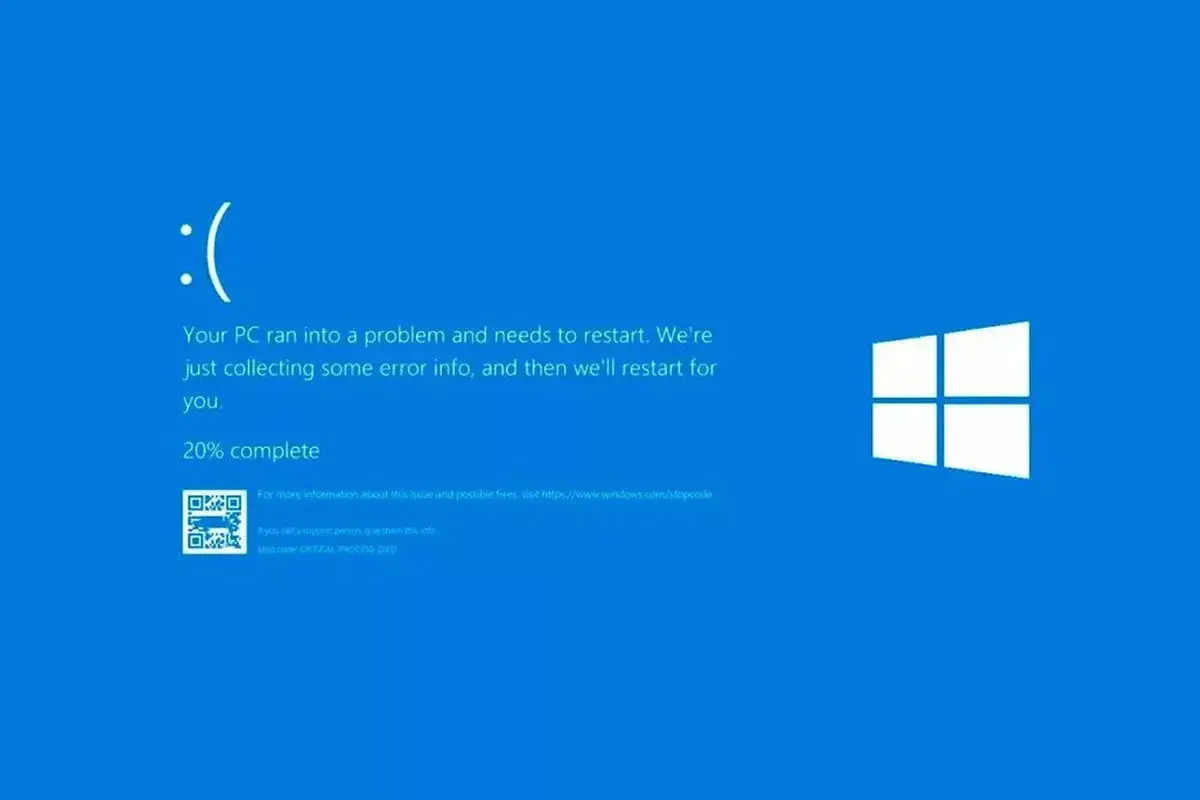For decades, Windows users have been familiar with one of the most dreaded signs of a system error: the infamous "Blue Screen of Death" or BSOD. This screen appears when the operating system encounters a critical error from which it cannot recover, forcing the computer to restart.
However, with the arrival of Windows 11, Microsoft has decided to give this classic screen a visual update. Now, instead of the traditional blue, the critical system error will be displayed with a black background. Although the content of the screen remains the same, the color has changed, marking the end of an era in Windows history.
Goodbye to the blue screen in Windows 11: The new black error screen has arrived

Known as the BSOD, this is the infamous blue screen that appears when something goes very wrong within the Windows system. In July 2024, the world experienced a true digital meltdown because of it. The culprit: a failed update from CrowdStrike Falcon that triggered thousands (yes, thousands) of Blue Screens of Death around the globe.
From airports to banks, including hospitals and companies, many Windows computers were taken out of service in an instant. The scene was so dramatic that the BSOD once again became a global trending topic.
Although many initially blamed Windows, the truth is that the error was caused by that faulty patch from CrowdStrike. Even so, the incident made it clear that Windows still has vulnerabilities when it comes to security, especially regarding how it handles the system's kernel.
As a result of all this, Microsoft decided to take action to strengthen the stability and security of Windows. In addition to internal improvements to the platform, they also took the opportunity to do something no one expected: say goodbye to the classic blue screen.
Yes, that blue background with the sad face we’ve all seen at some point will no longer be part of the experience. Instead, Microsoft has opted for a more subdued version: a completely black screen with cleaner, simplified text. While the functionality remains the same (to display a critical system error), the aesthetic change aims to better align with the new Windows 11 design, which is more modern and focused on visual coherence.
Some users might feel nostalgic. After all, the BSOD was part of computing “folklore” for decades. But the truth is that this change aims to convey a cleaner, more professional, and less alarming image when a crash occurs.

Read more: Microsoft Redesigns Windows Security Without Antivirus in the Kernel
One of the most notable changes (besides the color, of course) is that this new black error screen will still display the error code and the file or driver that caused it. In other words, beyond the visual change, what really matters is that it remains useful for identifying what went wrong. It’s not a change made just to look nice, but to stay functional.
The information was shared by the team at Windows Central, who noted that this update, which will officially replace the classic Blue Screen of Death, is expected to roll out by the end of 2025.
And although we already said that probably no one will truly miss that dreaded blue screen, the truth is that it will take some time to get used to seeing the new black background when something fails. Of course, this isn’t the only change on the horizon—Microsoft continues refining many key aspects of Windows, especially everything related to system security.

